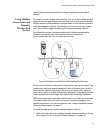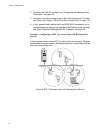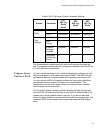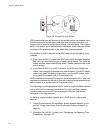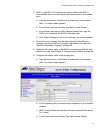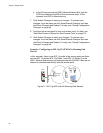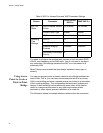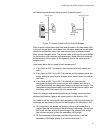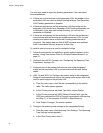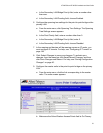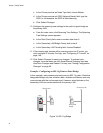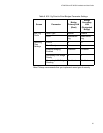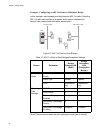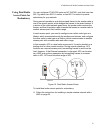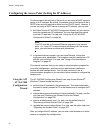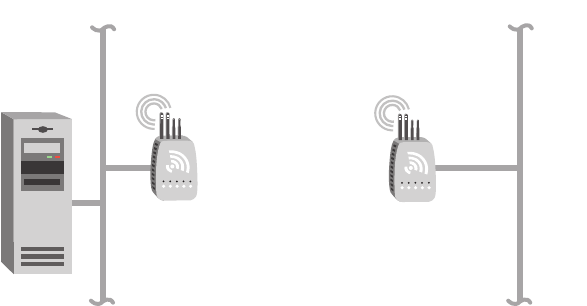
AT-WA7500 and AT-WA7501 Installation and User’s Guide
31
with access points that are acting as point-to-point bridges.
Figure 13. Access Points as Point-to-Point Bridges
Point-to-point bridges send data from end devices on the secondary LAN
to the root access point via wireless hops. Wireless hops are formed when
data from end devices move from one access point to another access
point through the radio ports. The master radio in the point-to-point bridge
on the primary LAN transmits hello messages, which allow the bridge on
the secondary LAN to attach to the spanning tree in the same way as
access points.
How many radios do you need in each access point?
If you have an 802.11a network, each access point only needs one
radio.
If you have an 802.11g or 802.11b network and the access points are
simply acting as point-to-point bridges, each access point only needs
one radio.
If you have an 802.11g or 802.11b network and you want the
designated bridge to also communicate with wireless end devices
(point-to-multipoint), the designated bridge must have two radios. The
designated bridge master radio must match the end device radios, and
the station radio must match the root master radio.
Data from wireless end devices should not go through more than three
wireless hops before it gets to an access point on the primary LAN.
You need to set the root priorities and secondary LAN bridge priorities for
the bridge on the primary LAN and for the bridge on the secondary LAN:
On the primary LAN bridge, set the root priority to a number that is
greater than the root priority of the secondary LAN bridge. The access
points will not form a point-to-point bridge if the primary LAN bridge
has a lower root priority than the secondary LAN bridge.
On the secondary LAN bridge, set the root priority to 0 and the
secondary LAN bridge priority to a number other than 0.
Primary LAN
Secondary LAN
Root
Host
Designated
bridge



